Photo
album: "Adélie penguins come back"
Fly
over a photo with the mouse to enlarge it
Click
on a photo to open it in a new window
The
vernal equinox (September 23rd in the southern hemisphere) is gone. Days are now
longer than nights. At the beginning of October three days of tempest have made
the pack ice, north of our island, disappear. It remains only some ice between
our island, Rostand island and the continent. We are once again limited on our
walking possibilities and we have to be very careful if we wish to cross over
the remaining ice to go and see the emperor penguins. In the meantime other
birds have arrived on the isles of Pointe Géologie archipelago (hence on
Pétrels island): Adélie penguins, petrels, skuas…
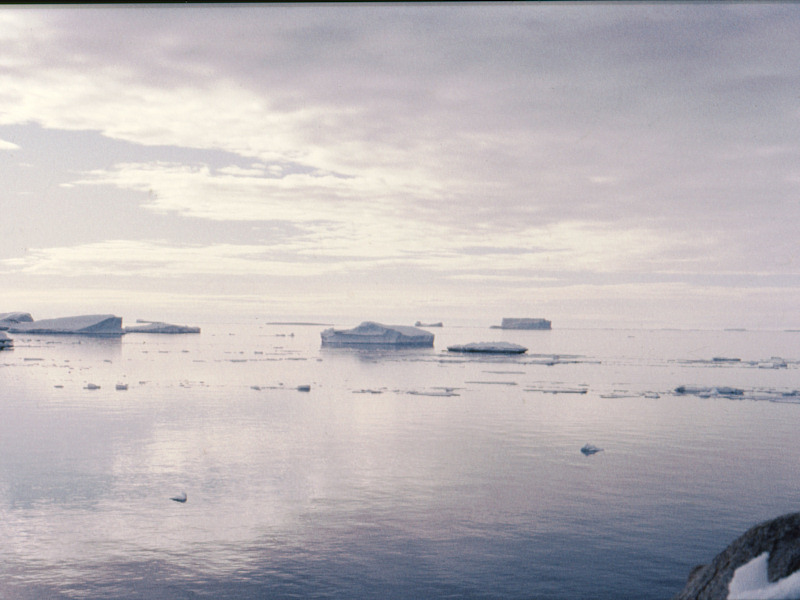 |
After the tempest at beginning of
October, the pack ice, north of our island, has disappeared. |
 |
Around mid-October Adélie penguin
males have come back on Pétrels island and on the other islands of Pointe
Géologie archipelago. They have to prepare their nest for when the
females arrive, within about one month. |
 |
Since we have some maintenance work
to do on the 73-metre antenna of the ionosphere sounder (secure the bolts
of the ladder casing, exchange the lamp of the flashing light), we will
take advantage of this opportunity to have a look around from the top of
the antenna. |
 |
We are now at the beginning of
November and we can see, southwards, there is no ice left between Carrel
island and the continent. |
 |
Looking towards north, we have a
view of the main part of Dumont d'Urville base, where are the laboratories,
the technical service, meteorology and life facilities. |
 |
We can see, eastwards, the new
building for people accommodation during summer campaigns and, behind, the
old buildings .used during the first winter campaign on Pétrels island,
in 1953, after fire destructed Port-Martin base situated farther east on
the continent edge. These shelters called "Marret Base"
accommodated seven people under the responsibility of Mario Marret. He
wrote, later, a book narrating this campaign: "Sept hommes chez les
pingouins". |
 |
Closer view eastwards: on the left,
the garage of the first campaign; on the right, the fuel tanks and the
gantry for unloading the boats; behind, "le pré" (the meadow -
a slightly tilted roughly flat surface, south of the isle) and at the
right side of the "Cervin" (small rock looking as the Matterhorn
mountain, more visible on the previous photo) in front of the "Mont
Rose", the building used to assemble the rockets during the
scientific campaign, beginning of 1967. |
 |
Looking towards south-east, the
west side of Rostand island and, behind, the place where stood the colony
of emperor penguins. As the ice has become very thin, the penguins moved
to the continent edge. |
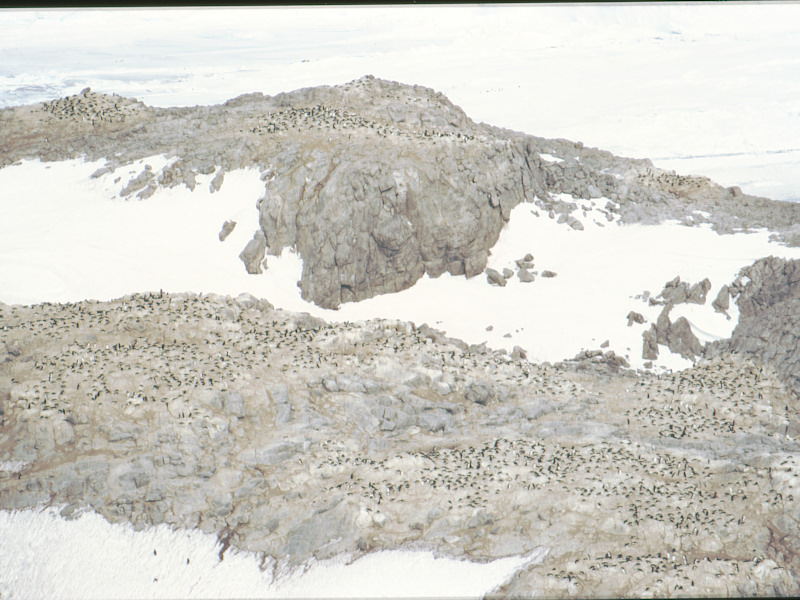 |
A closer view allows us to see the
large number of Adelie penguins dwelling on Rostand island. |
 |
At the foot of the antenna, we perceive Adélie penguins looking like
black dots.
|
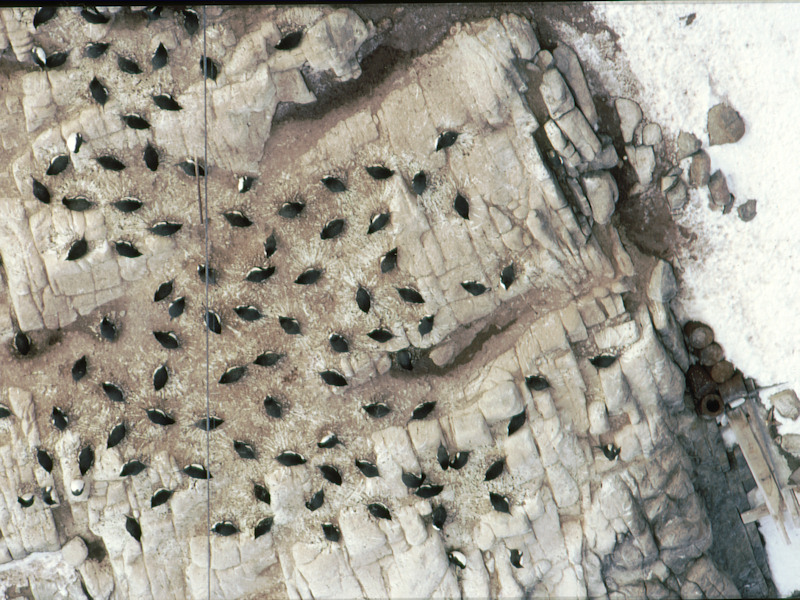 |
The long focal lens helps us to a
better view of the penguins sitting on their nest. |
 |
Let us go down the ladder to have a
closer view of the penguins. |
 |
On the contrary to emperor penguins,
Adélie penguins have a very acute sense of territory. Their nest is made
of little pebbles which help them not to stay in contact with snow when
there is some. Like for men, there are poor penguins (this one has few
pebbles in its nest and it seems uneasy!). |
 |
And there are rich penguins (this
other one has a lot of pebbles in its nest and it can sleep relaxed!).
When a male penguin wish to court a female, it brings her a few stones as
a present. There are also some attempts of stealing stones, which end in
big fights. Adélie penguins are easily quarrellers, mind itself the
penguin that approach too much another one's nest! They are also very
noisy when they fight. |
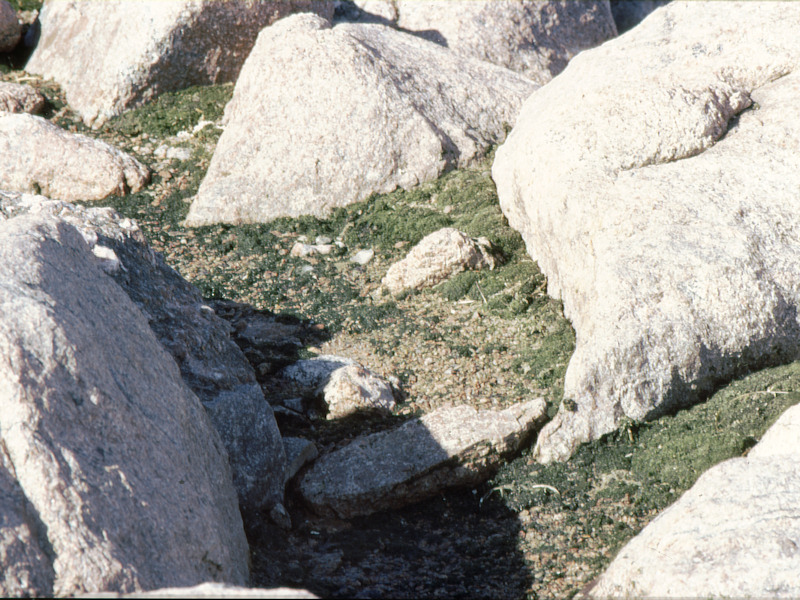 |
When I said, at the beginning, I
was to live in a totally mineral world, it was not entirely true: it is
possible to find, when summer is coming, in rare places, a kind of lichen
hidden between the rocs. |
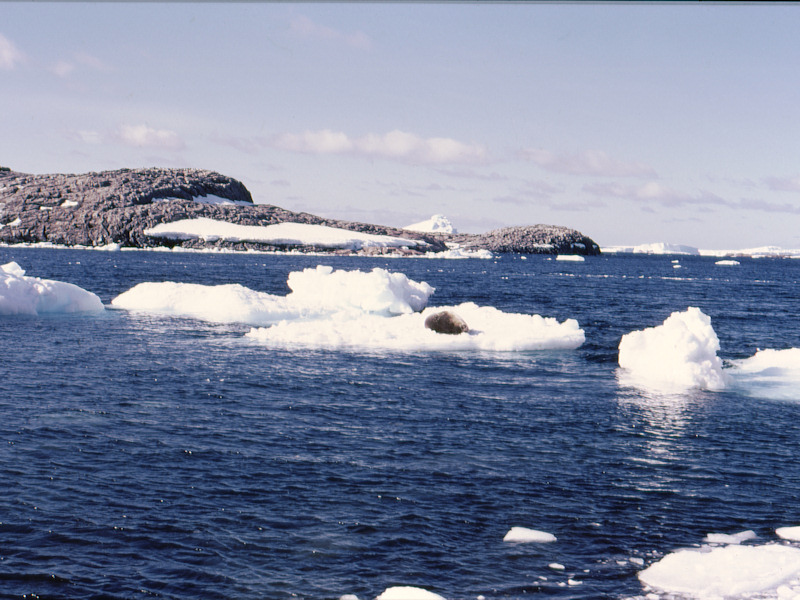 |
But what is it on this piece of
floating ice? |
 |
Using the long focal lens, we
discover a Weddell seal dozing tranquilly. He has no longer, now, the
problem of maintaining a hole in the ice and if there is not enough
floating pieces of ice between the islands, it can go and sleep on anyone
of these islands. |
Go
back
.
.
.
.
.
.
.








